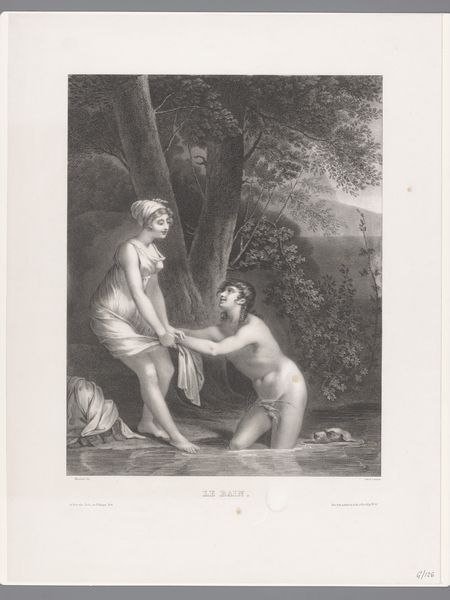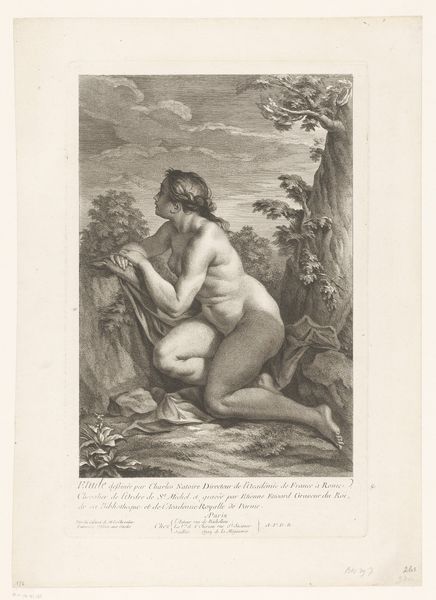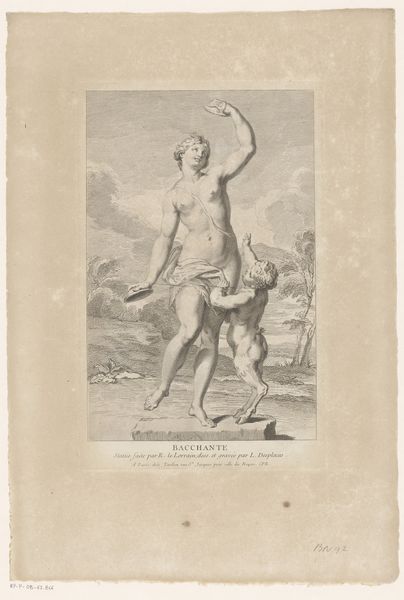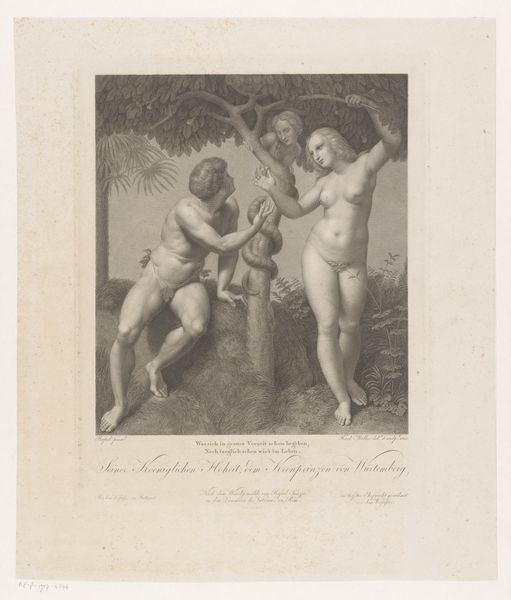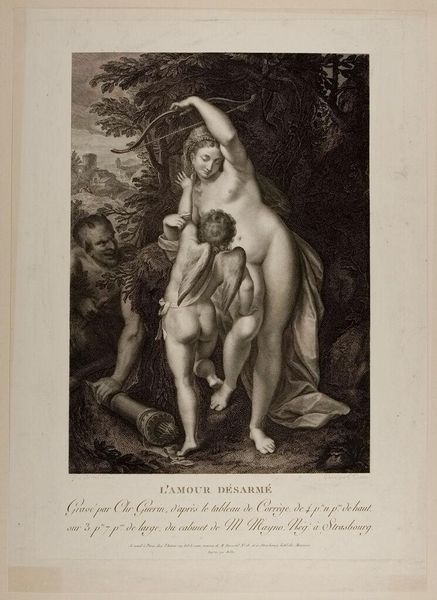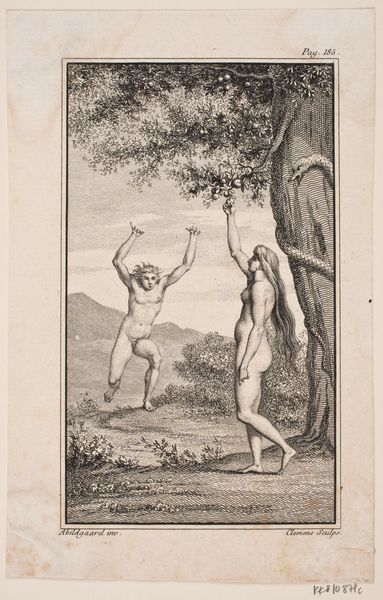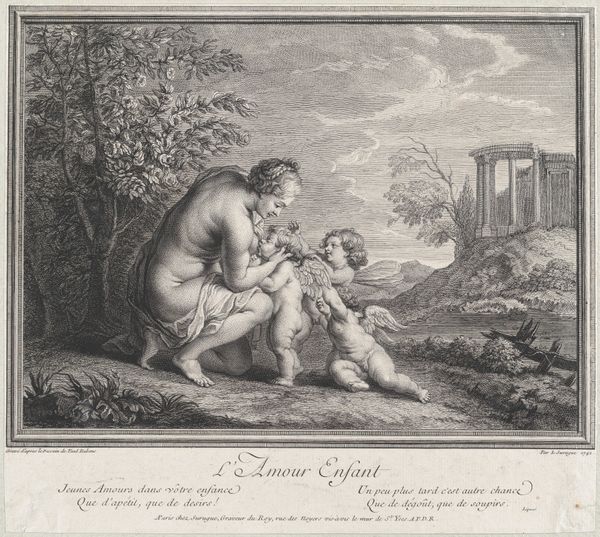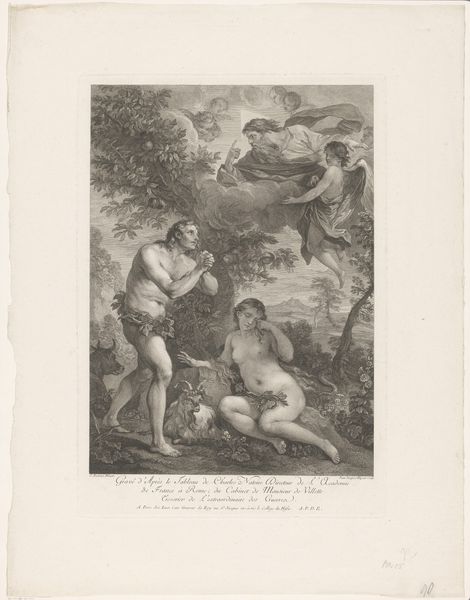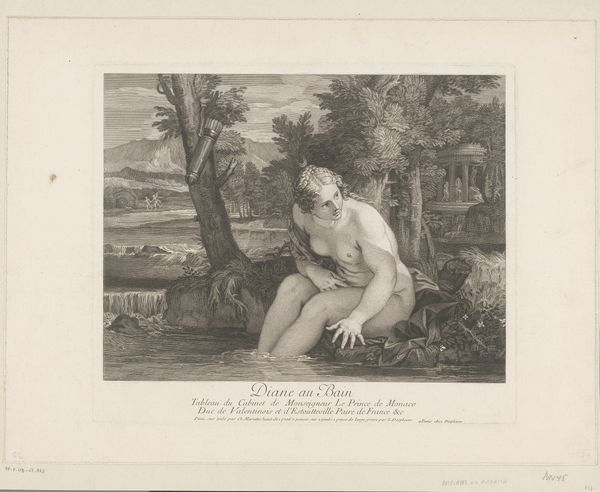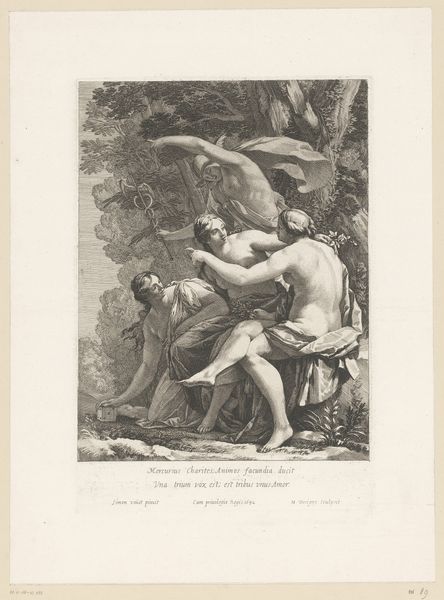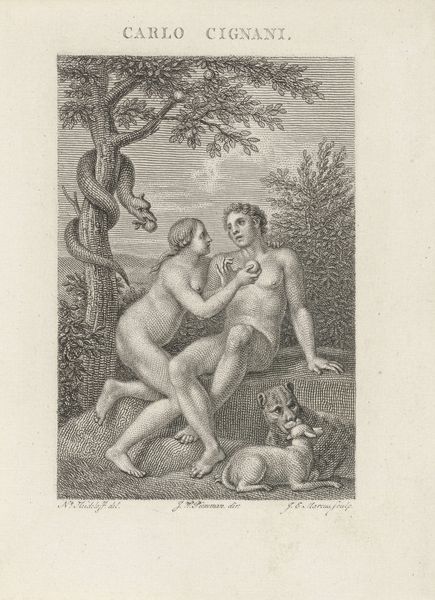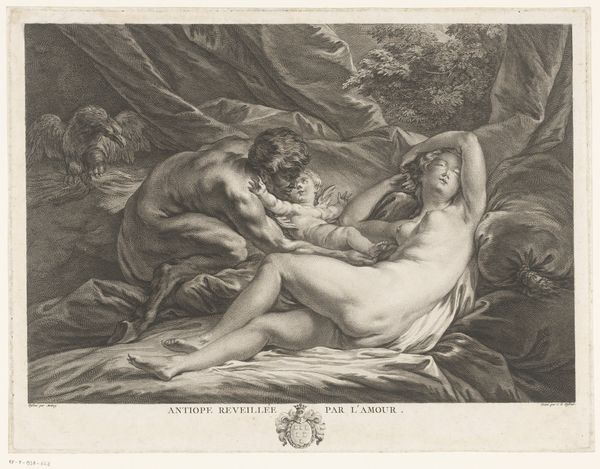
print, etching, engraving
#
narrative-art
# print
#
etching
#
history-painting
#
academic-art
#
engraving
#
realism
Dimensions: 422 mm (height) x 311 mm (width) (billedmaal), 495 mm (height) x 357 mm (width) (Plademål)
Curator: Andreas Flint created this print titled "Kain dræber Abel" – "Cain slays Abel" – in 1794. It's currently held at the SMK, the National Gallery of Denmark. What's your first take? Editor: Violent. The stark contrasts and rigid poses certainly drive home the tragic drama of fratricide. There is a sharp dichotomy. Curator: Exactly, Flint captures the moment of ultimate transgression using etching and engraving techniques. Consider the labor invested; the artist meticulously layers lines to construct tone and form. It's a commercial object meant for consumption. This work translates the biblical narrative into a consumable image for widespread moral reflection within contemporary Danish society. Editor: Yes, the medium lends itself to stark realism. Notice the almost academic rendering of musculature, the classical contrapposto stance of Cain himself, the anguished expression of Abel. How do you read the landscape behind them? Curator: The dark, dense forest versus the sliver of light. Flint presents this narrative steeped in labor – the clearing of land, the moral implications, even the labor involved in consuming this print prompts the viewer to reflect upon work itself, in 18th-century Denmark. Editor: Interesting. From a purely formal perspective, the use of light is striking. It spotlights the raw emotion in their figures, contrasting it sharply against the neutral landscape. The poses are classical, yet imbued with visceral energy. A real study in contrasts. Curator: I agree that contrast heightens the visual impact and is a central construction in this print, both in terms of artistic expression and dissemination in social context. We can even reflect on who had access to prints in 18th-century Denmark, which reflects a particular consumer profile. Editor: It makes the stark binary all the more devastating. I am especially impressed by the almost photographic rendering of skin texture despite it being a reproduced print. Curator: Considering this image, how labor is translated as an object of both aesthetic reflection and moral narrative helps illuminate how we conceptualize the materiality and message today. Editor: Indeed, it serves as a sobering reminder of humanity's darker side, crafted with undeniable skill.
Comments
No comments
Be the first to comment and join the conversation on the ultimate creative platform.
